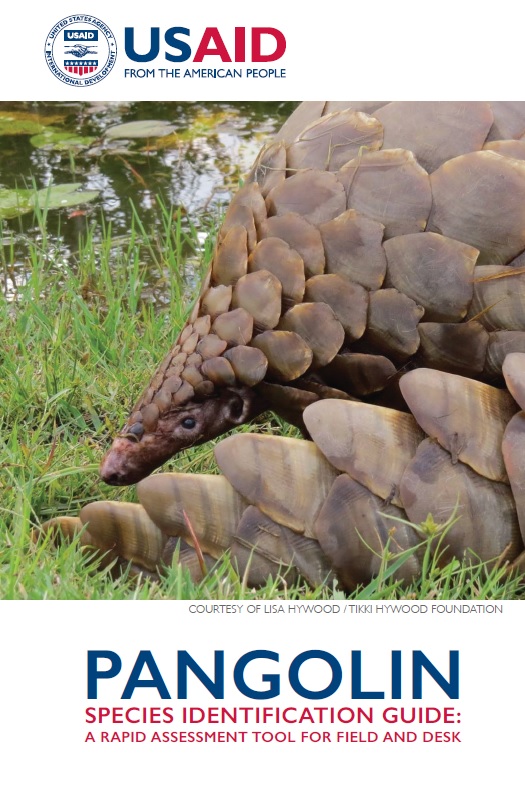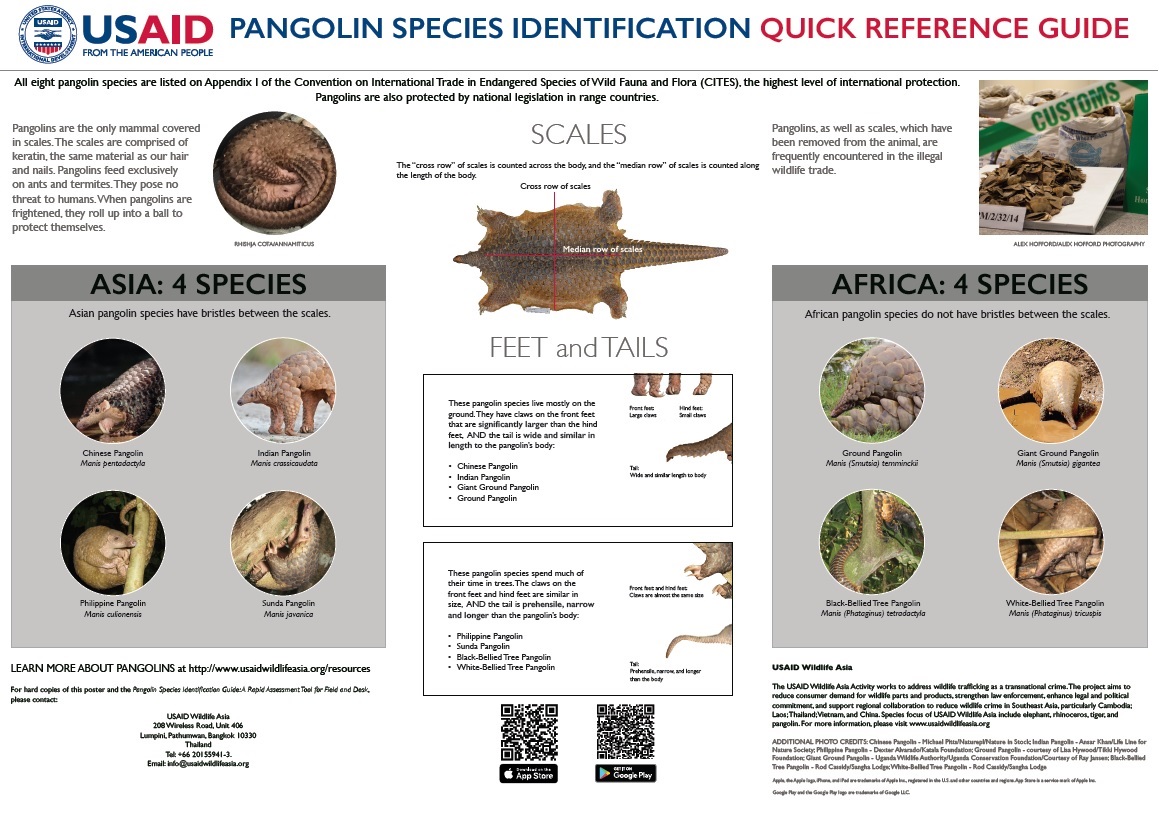New guide developed to identify pangolin species
To assist law enforcement officers in identifying illegally traded pangolins, the United States Agency for International Development (USAID) Wildlife Asia initiative developed a pangolin species identification guide and poster to help people identify pangolin species, including body parts and scales.
Pangolins are one of the most trafficked mammals in the world. Despite a ban on international trade by the Convention on International Trade in Endangered Species of Wild Fauna and Flora (CITES), pangolins are still illegally traded primarily for their scales’ medicinal values. From 2000 to 2013, TRAFFIC reported that an estimated one million pangolins are believed to have been smuggled, making them the world’s most trafficked animals[1]. As a result, each of the eight species is now threatened with extinction.
The guidebook contain range maps, which are designed to assist law enforcement in determining possible country of origin and transit routes for pangolin species observed in trade. It also contains species summaries in particular species differentiators such as profiles, total lengths, scale patterns, feet and ratio of tail to body. Total length and ratio of tail to body are helpful when identifying dead animals with scales removed.
Supporting this initiative, the IUCN Species Survival Commission (SSC) Pangolin Specialist Group had provided technical assistance in the guide development. These reference materials are available in English, Chinese, French, Indonesian, Khmer, Lao, Malay, Portuguese, Thai and Vietnamese languages. QR codes were also developed to easily access the species guide using mobile phones.
Click here to access the Pangolin Species Identification and Reference Materials.
________________________
[1] Source: https://www.nationalgeographic.com/animals/mammals/group/pangolins/





